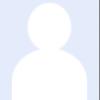
Despite facing regional threats like deforestation and wildfires, the world's forests continue to be a powerful weapon in the fight against climate change. A new study reveals these vital ecosystems have consistently absorbed carbon dioxide for the past three decades, even as disruptions chip away at their capacity.
In their study just published in the journal Nature, the authors highlight the critical role of forests in mitigating climate change. The study further shows that deforestation and disturbances like wildfires are threatening this vital carbon sink.
“While the overall global picture is encouraging, there are large areas with problematic trends and forecasts. This primarily concerns the central and eastern parts of northern Eurasia continent, where global warming has already led to an unprecedented spread of wildfires and the death of 33 million hectares of forests in Russia alone between 2010 and 2019. In the southern part of this vast region, critical moisture shortages are expected, which may challenge the very existence of existing forests in temperate forest and forest-steppe zones in Kazakhstan, Mongolia, southern Russia, and Ukraine. This means that we urgently require specific forest adaptation strategies,” notes IIASA Distinguished Emeritus Research Scholar Anatoly Shvidenko, one of study coauthors.
The team, which included researchers from 11 countries, based their work on long-term ground measurements combined with remote sensing data, finding that forests take up an average of 3.5 billion metric tons of carbon per year, which is nearly half of the carbon dioxide emissions from burning fossil fuels between 1990 and 2019.
"Our research team analyzed data from millions of forest plots around the globe," explains US Department of Agriculture (USDA) Forest Service Northern Research Station Senior Research Scientist Yude Pan, who co-lead the study. "What sets this study apart is its foundation in extensive ground measurements – essentially, a tree-by-tree assessment of size, species, and biomass. While the study also incorporates remote sensing data, a common tool in national forest inventories and land surveys, our unique strength lies in the detailed on-the-ground data collection."
The results show that Boreal forests in the Northern Hemisphere, spanning regions like Alaska, Canada, and Russia, have experienced a significant decline in their carbon sink capacity, dropping by 36% due to factors such as increased disturbances from wildfires, insect outbreaks, and soil warming. Tropical forests have also seen a decline, with deforestation causing a 31% decrease in their ability to absorb carbon. However, regrowth in previously abandoned agricultural lands and logged areas has partially offset these losses, keeping the net carbon flux in the tropics close to neutral. Temperate forests, on the other hand, have shown a 30% increase in their carbon sink capacity. According to the authors, this rise is largely due to extensive reforestation efforts, particularly in China.
“The persistence of the global forest carbon sink was a surprise given global increases in wildfire, drought, logging, and other stressors,” notes study co-lead Richard Birdsey, a Senior Scientist at Woodwell Climate Research Center in the US. “But it turns out that increasing emissions in some regions were balanced by increasing accumulation in other regions, mainly re-growing tropical forests and reforestation of temperate forests. These findings support the potential for improving protection and management of forests as effective natural climate solutions.”
The study describes how certain land management policies and practices can help preserve this global carbon sink. The findings support a focus on curtailing deforestation across all forest biomes, for example, promoting forest restoration on lands that may be unsuitable for agriculture, and improving timber harvesting practices to minimize emissions from logging and related activities. The authors, however, also highlight the limitations in data collection, particularly in tropical regions and call for increased research and establishment of more ground sampling plots in these areas to reduce uncertainties in carbon estimates and improve understanding of the global carbon budget.
“Global forests can continue to efficiently sequester and store carbon, while simultaneously providing numerous other benefits that humans receive from the natural environment and properly functioning ecosystems. However, with increasing human pressure and a rapidly changing climate, adaptive and regionalized forest management is needed now more than ever,” concludes study coauthor and IIASA Senior Research Scholar, Dmitry Schepaschenko.
Adapted from a press release prepared by the USDA Forest Service Northern Research Station.
Reference
Pan, Y., Birdsey, R.A., Phillips, O.L., Houghton, R.A., Fang, J., Kauppi, P.E., Keith, H., Kurz, W.A., Ito, A., Lewis, S.L., Nabuurs, G., Shvidenko, A., Hashimoto, S., Lerink, B., Schepaschenko, D., Castanho, A., & Murdiyarso, D. (2024). The enduring world forest carbon sink. Nature DOI: 10.1038/s41586-024-07602-x
News

16 July 2024
Mapping global rooftop growth for sustainable energy and urban planning

10 July 2024
Latest European Demographic Data Sheet highlights lasting impact of war and migration

08 July 2024


